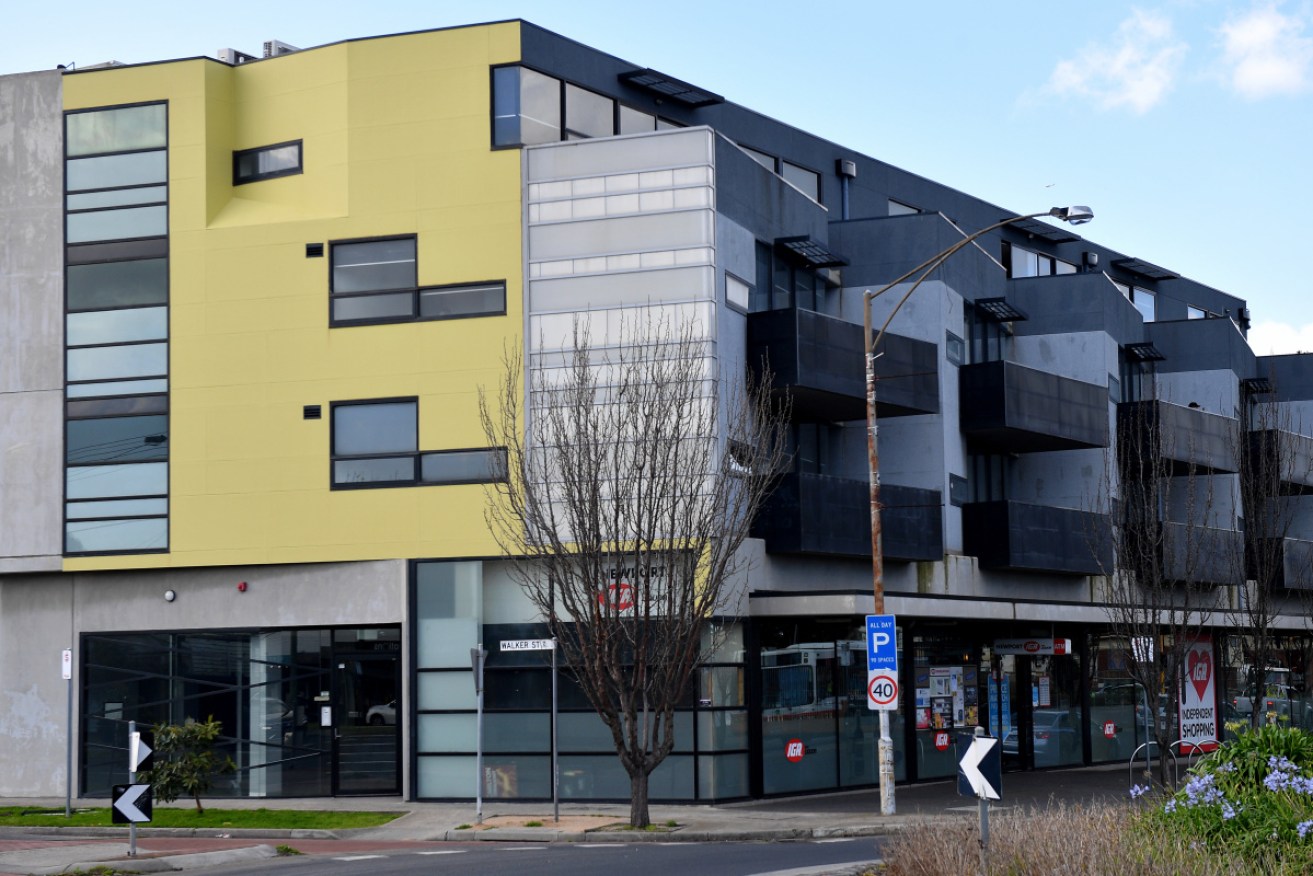Vic testing site infection remains a mystery

The man visited his partner in this Melbourne apartment block – where all residents are now being tested. Photo: AAP
Victorian health authorities still do not know how a testing site traffic controller contracted COVID-19, as the state anxiously awaits genomic sequencing results.
Six new local coronavirus cases were confirmed on Thursday, all linked to Victoria’s current outbreaks and in isolation while infectious.
Four Bacchus Marsh college students, who tested positive on day 13, and two household contacts linked to the Lacrosse apartment building in Docklands are among the new cases.
But the mystery case reported on Wednesday and officially included in Thursday’s numbers continues to puzzle authorities.
The man, who worked at the Moonee Valley Racecourse COVID testing site, tested positive on Wednesday, two days after developing symptoms.
While health experts and contact tracers continue to track the man’s movements, acting chief health officer Ben Cowie warned authorities “may not find the smoking gun” of where the transmission occurred.
He said the 200-odd cases stemming from the state’s Delta outbreak were highly related, making it more complicated to decipher clear links using genomic sequencing.
Acting COVID Commander Naomi Bromley said officials were following up “all possible sources of infection”, including the man’s movements before he contracted the virus.
His family and close contacts are being tested, but all have so far returned negative results.
Additionally, residents of a Newport apartment building are also undergoing testing, after the man visited his partner while infectious.
Mr Cowie said it was thought the man was not vaccinated when he contracted the virus, despite being eligible since February as a frontline worker.
“We certainly strongly encourage all frontline healthcare workers, including those testing sites, to come forward and be vaccinated,” he said.
Dr Catherine Bennett, chair of epidemiology at Deakin University, said it was urgent contact tracers got to the bottom of his infection.
If unable to link it back to a visitor or colleague at the testing site, Dr Bennett said it would indicate undetected spread further upstream from a close contact before they entered quarantine.
“The problem with that is that’s now two weeks ago,” she said.
“We know what can happen in two weeks. We saw the whole [Delta outbreak] play out in two weeks.”
She noted several exposure sites listed on Tuesday dated back on July 15, creating a small chance that people could have been infected and passed it onto others, which could break the link to known exposure sites.
“It is a worry. This is actually what happened in Sydney. That’s how it got away from them,” Dr Bennett said.
“They found that chain that led to the seafood wholesaler. They managed to contain that but at the same time there was another chain into south-west Sydney and that’s where it took off.”
The drive-through testing centre, which is listed as a tier-three exposure site over two days, was immediately closed on Wednesday, with dozens of staff sent home to isolate as a precaution.
The testing centre will remain closed for at least the next few days while it is deep cleaned.
Meanwhile, people living in Camberwell, in Melbourne’s inner-east, with mild symptoms are being urged to get tested after fragments of COVID were found in wastewater earlier this week.
More than 42,000 test results were received in the past 24 hours, while about 19,000 vaccine doses were administered at state-run sites during the same period.
-AAP








